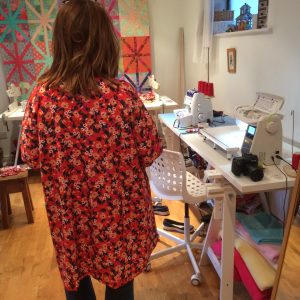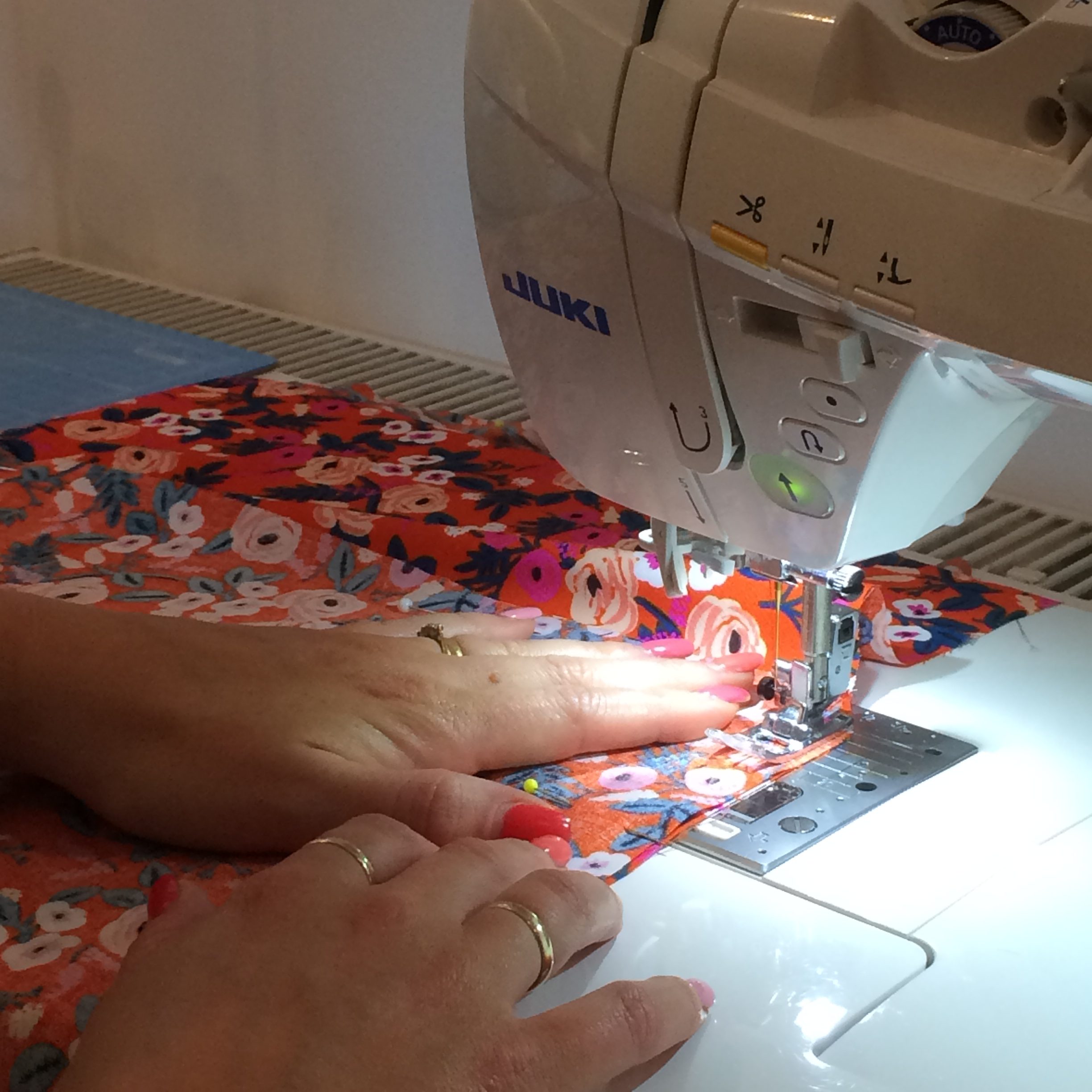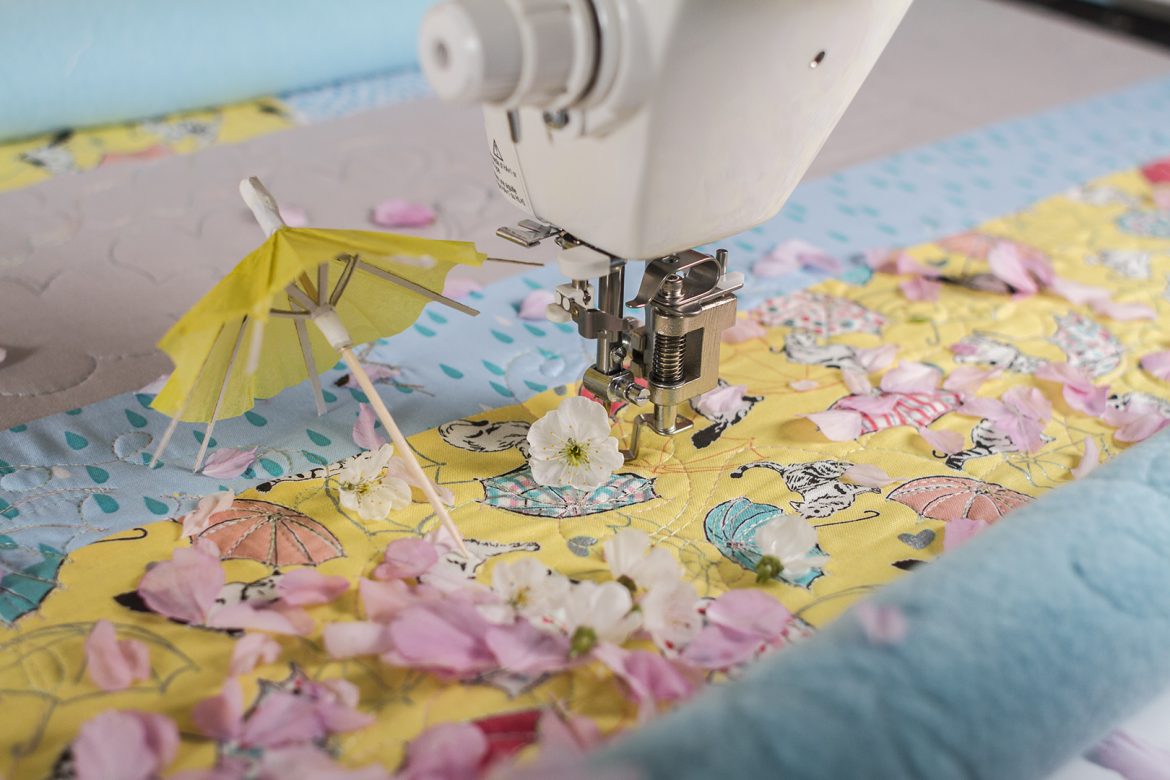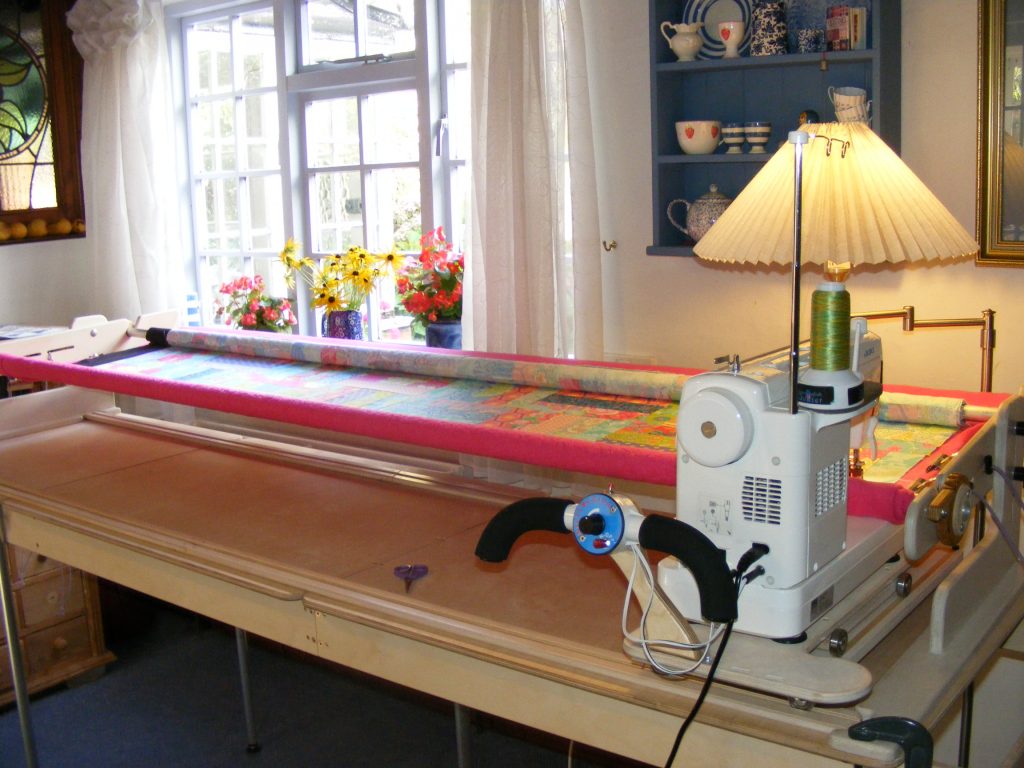 Like most projects, this kimono jacket started with falling in love with the fabric. I’d ordered a Fat Eighth Bundle of Wonderland Fabrics designed by Rifle Paper Company for Cotton + Steel from the Fat Quarter Shop. Wonderland was the second fabric line brought out by Anna Bond from Rifle Paper Company. As the name suggests, Rifle Paper Company began making stationary in a bold modern folk style, became wildly successful and then collaborated with Cotton + Steel to print fabrics. I’ve fallen in love with the fabrics. Big time. The fat eighth bundle came with 10 fat eighths of quilters cotton and 2 of rayon challis. As a quilter I’ve only ever been interested in the cotton, but the rayon looked and felt amazing! So vibrant and soft with good body, as we felt it and saw the drape, Emily and I knew it would make a wonderful kimono jacket.
Like most projects, this kimono jacket started with falling in love with the fabric. I’d ordered a Fat Eighth Bundle of Wonderland Fabrics designed by Rifle Paper Company for Cotton + Steel from the Fat Quarter Shop. Wonderland was the second fabric line brought out by Anna Bond from Rifle Paper Company. As the name suggests, Rifle Paper Company began making stationary in a bold modern folk style, became wildly successful and then collaborated with Cotton + Steel to print fabrics. I’ve fallen in love with the fabrics. Big time. The fat eighth bundle came with 10 fat eighths of quilters cotton and 2 of rayon challis. As a quilter I’ve only ever been interested in the cotton, but the rayon looked and felt amazing! So vibrant and soft with good body, as we felt it and saw the drape, Emily and I knew it would make a wonderful kimono jacket.
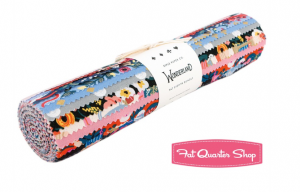
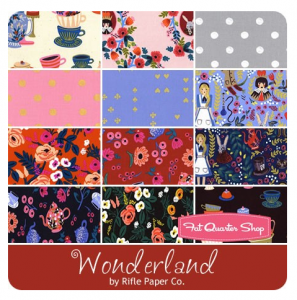
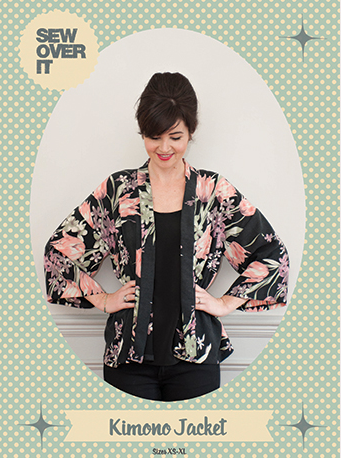
After a bit of searching, Emily found the perfect kimono jacket pattern from Sew Over It, a London based endeavour started by Lisa Comfort. Lisa’s goal was to share her passion for sewing and teach as many people as possible how to do it! She sells awesome, often vintage PDF patterns that come with plenty of easy-to-follow online support. We opted for the longer version of this kimono jacket.
What’s a PDF pattern? A PDF pattern is a downloadable pattern that you print yourself on your home computer. You tape it together and you’re ready to sew. This kimono jacket pattern had just 4 pieces and a fairly simple construction. The challenge for us was figuring out how to work with light weight rayon fabrics.
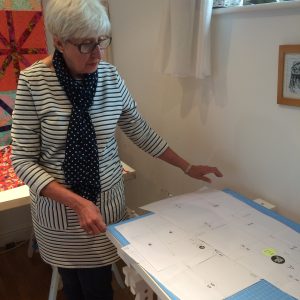
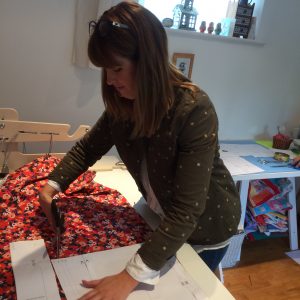
We met the challenge of working with light weight rayon fabric by using the right sewing machines, needles and threads. To sew smoothly through the light weight rayon fabric, we changed the needle on the Juki DX7 to a very fine Microtex #60 Sharp needle. The very fine sharp needle easily pierced the rayon fabric and kept it from puckering. We used a bright red Bottom Line thread on top and in the bobbin. Bottom Line is a fine 60 weight thread; the colour and the weight matched perfectly with the rayon challis fabric. The fine thread also made it easier to thread the tiny eye of the needle!
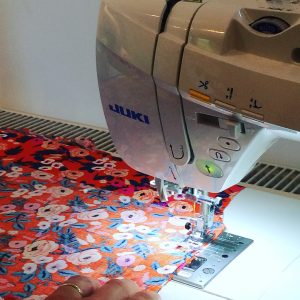
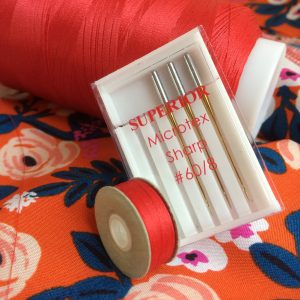
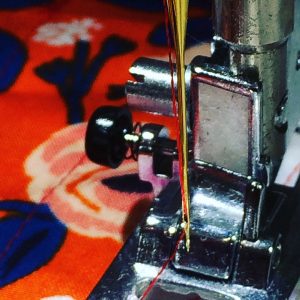
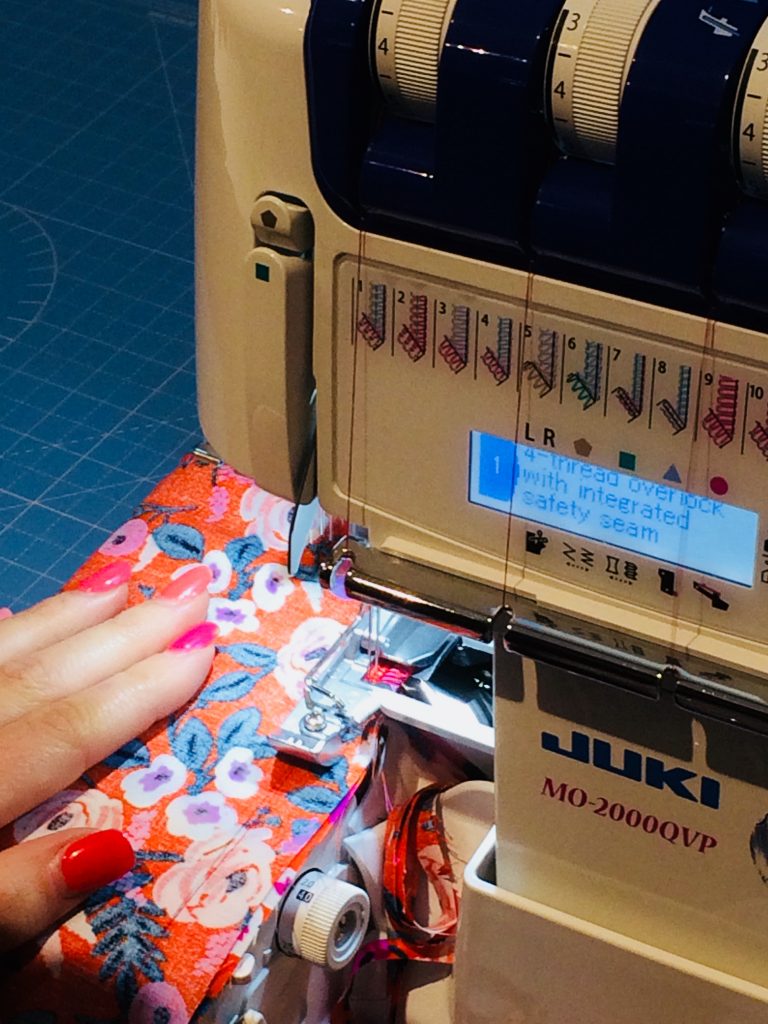 After stitching the seams together, Emily finished off the seams for a professional look with the Juki MO 2000 overlocker. We re-threaded the overlocker with bright red thread designed specifically for the overlocker, called Sergin’ General from Superior Threads.
After stitching the seams together, Emily finished off the seams for a professional look with the Juki MO 2000 overlocker. We re-threaded the overlocker with bright red thread designed specifically for the overlocker, called Sergin’ General from Superior Threads.
The Juki MO2000 is such a fun overlocker to thread! Both the loopers are air threaded! You just put a couple inches of thread into a thread port and press the WHOOSH button. A puff of air glides the thread through the machine and out the other side. Easy Peasy! This takes all the grief out of the threading process and makes using an overlocker something that even beginners can do.
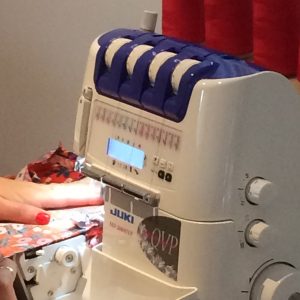
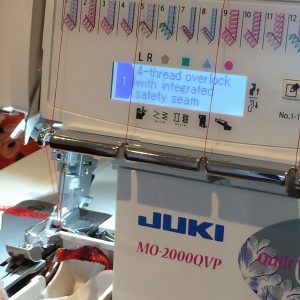
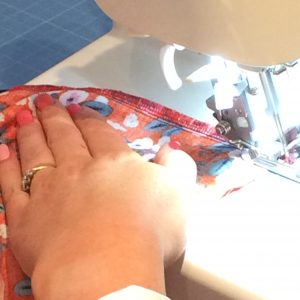
Emily went back and forth; pinning the pieces, stitching them together on the DX7 and finishing the seams with the MO2000 overlocker. Seam by seam the kimono jacket came together.
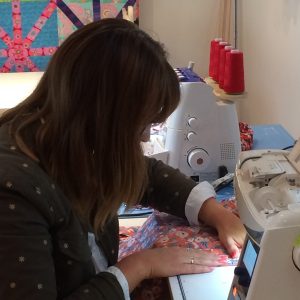
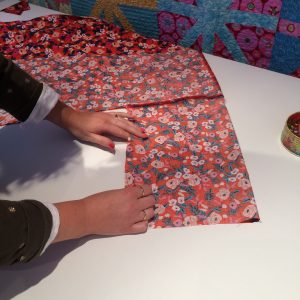
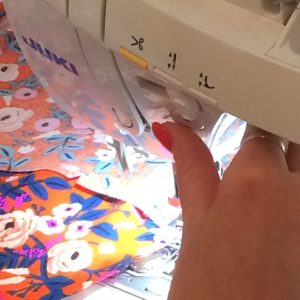
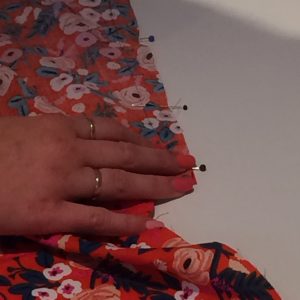


Emily was so excited, she couldn’t stop until she was all finished. How amazing to get the idea one week. Order the fabric from America. Have it arrive in 4 days and completely finish the project in one day, between 3:00 and 8:00! We couldn’t believe how great it looked! You can see Emily’s blog post all about her kimono jacket and view the gorgeous photos. I’ll just leave you with a couple. This kimono jacket was so easy, fast and fun! I have some new Rifle Paper Company rayon waiting in the wings. I can’t wait to make the next one!!

